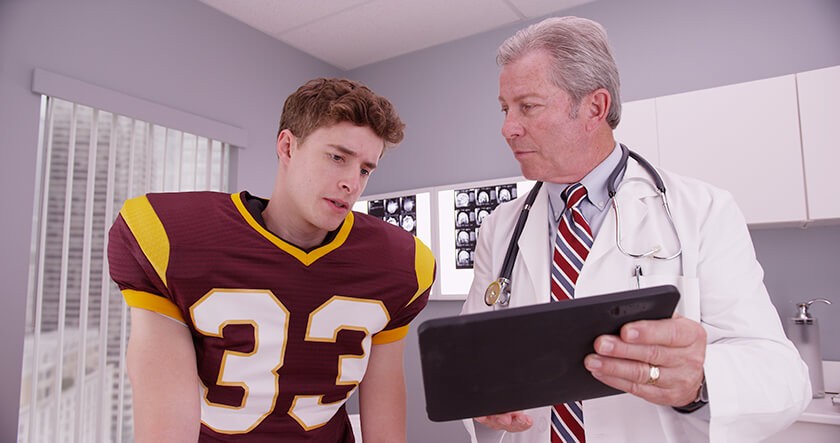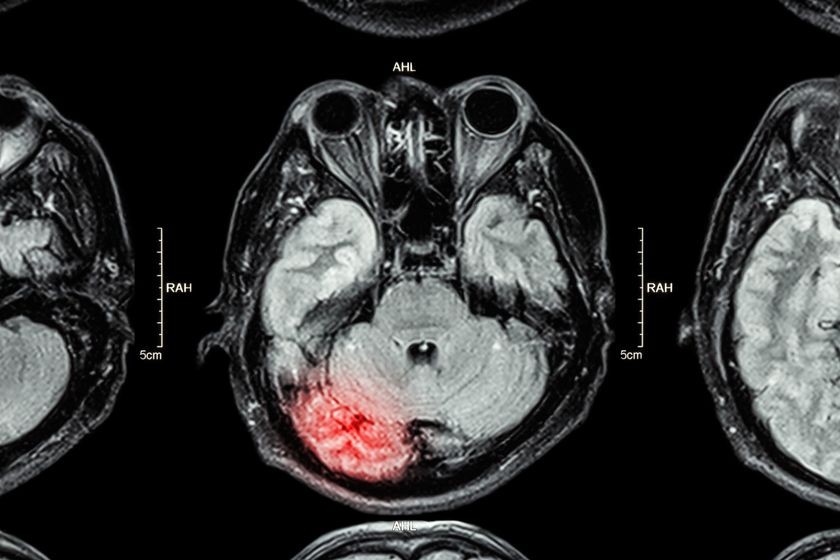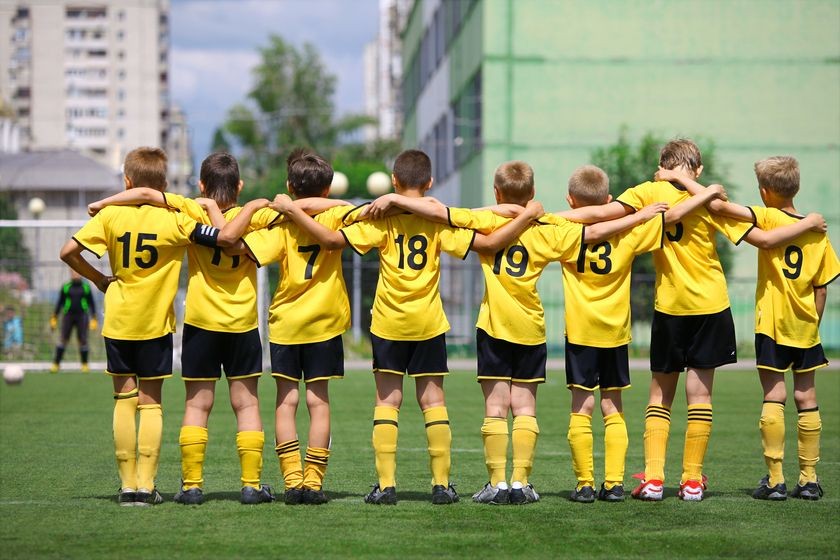
Sports Concussions Are on the Rise: Defend Your Child Athlete from the Risk and Effects of Concussions (Part 2)

(This is part 2 of a 2-part series on sports-related concussion injuries)
A concussion is an injury to the brain that occurs when the brain “bounces” off the skull. While your skull and a thin protective layer of cushioning fluid provide some degree of protection against minor bumps, they can’t protect against a forceful collision with a hard surface. A jolt to the head forces contact between the brain and the hard skull bones, bruising the brain’s delicate tissues and stretching and tearing nerve fibers and blood vessels inside the brain. Torn vessels leak blood into the brain, resulting in mounting pressure that can lead to more significant, permanent brain damage over time.
From “Junk Science” to Acute Brain Trauma
According to researchers at Virginia Tech, “The modern football helmet had been updated in the 1970s and 1980s in an attempt to prevent football’s nastiest injuries — skull fractures, broken necks, and spine injuries, which killed 32 players in 1968 alone. Because of those mandated improvements, deaths plummeted… Unfortunately, those helmets weren’t designed to reduce concussion incidence or lower the gravitational forces (G-forces) generated by every hit.”
“Even as recently as the early 2000s, many considered concussion a ‘junk diagnosis,’ says Virginia Tech football team physician and sports medicine researcher Gunnar Brolinson. “Back then, quite frankly, nobody cared.”
With all the attention on the NFL and the link between concussions and the degenerative brain disease known as chronic traumatic encephalopathy (found in individuals who have been exposed to repeated head trauma), professional and amateur sports leagues are making attempts to improve player safety. Researchers at Virginia Tech have devised a helmet rating system that has been instrumental in spurring the development of safer helmets. According to Stefan Duma, leader of Virginia Tech’s helmet research lab, “In order to get a five-star rating, you have to do well with the big hit, but you also have to do well with the medium and low hit.”
Concussion Prevention
In terms of concussion management, Duma explains that, “There are three things that have to be done together. The first and most important is league rules, the second is coaching technique, and the third layer is equipment — the helmet protection. [Youth football league] Pop Warner has made changes across the country in terms of limiting practice contact based on our research, and it has had a dramatic effect. Over the course of a season, we reduced head impacts from 300 per kid per year to 150. We reduced the number of times the kids were hit in the head by half, and yet the games were exactly the same. That’s huge. You’re smacking these kids in practice, and you don’t need to. So absolutely the rules are most important. Not getting hit in the head is most important.”
Sports, leagues and coaches bear some responsibility for player safety, and there are concussion safety and education laws now in place in nearly every state. But parents are responsible too!
Insist Upon Suitable Protective Gear
Make sure your child has the appropriate protective gear for the activity, such as helmets, wrist guards, knee or elbow pads. Though no helmet is concussion-proof, Virginia Tech researchers have identified the football and hockey helmets that best reduce concussion risk.
To be effective, protective sports equipment must be in good condition, fit properly and worn correctly at all times. Secondhand gear that is ill-fitting, has compressed or worn padding or missing or broken buckles, does not provide adequate protection. Safety features of helmets, can be compromised through rough play — for the best protection, buy a new helmet.
Forbid Unsafe Behavior
The CDC reports that as many as 25% of the concussions reported among high school athletes result from aggressive or illegal play. Let your child know that you expect him or her to follow the rules and that you will not tolerate aggressive or unsafe behavior. And, speak up if you think that your child’s coach is promoting aggressive behavior or pushing injured kids to stay in the game.
When In Doubt, Sit It Out
The Institute of Medicine and National Research Council found that young athletes face a “culture of resistance” to reporting concussions, often because they don’t want to let the team down, be perceived as being weak, or missing out on playing in an important game. “Coaches are the first line of defense against brain injury,” says neurosurgeon Dr. Uzma Samadani. “There needs to be open lines of communication so that the player will be honest if he’s injured.”
Insist that the league and your child’s coach follow concussion safety procedures, let your child know it’s OK to leave the game or practice following a blow to the head or any injury and don’t allow your child to practice or play until he or she receives medical clearance.
According to UPMC, once an injury occurs, the brain is in an extremely vulnerable state and more susceptible to additional injury. If ever in doubt about a concussion, always sit it out.
Check Your Attitude
Many parents want their athlete to be tough and aggressive. Parents of an outstanding athlete can easily get caught up in the possibility of a college scholarship and even a pro career. They may love the attention and adulation from the coach and community and want to bask in the glory of being the mom or dad of the “star” athlete. If you’re overly focused on your child’s success, you can lose sight of your first responsibility to keep your child safe.
Check Your Child’s Attitude
Athletes who insist on training or playing when injured, tired or unwell, or show signs of an eating disorder are at greater risk for injury. A child who is motivated, for whatever reasons, to be the very best and/or win at any cost is likely to push him or herself to train and play too hard, and push the boundaries of safety.
What to Do When You Suspect Your Child Has a Concussion
The CDC advises that you take your child to the emergency department right away if, after a bump, blow, or jolt to the head or body, he or she shows any signs of concussion.
- Headache that gets worse and does not go away
- Confusion, restlessness, or agitation
- Unusual behavior
- Difficulty focusing or concentrating
- Mood changes, including extreme excitability or irritability
- Weakness, numbness
- Dizziness or vertigo
- Hearing-related issues, including “ringing” in the ears
- Problems with balance or coordinated movements
- Memory issues (including not recalling or having vague recollections of the head trauma)
- Vomiting or nausea
- Vision problems or changes in vision
- Slurred speech or problems with speech
- Appears very drowsy or cannot wake up
- One pupil (the black part in the middle of the eye) larger than the other
- Convulsions or seizures
- Cannot recognize people or places
- Loses consciousness
Not everyone who experiences a concussion will exhibit symptoms right away; it can take several days for noticeable symptoms to appear, and by that time, permanent damage may already have occurred.
Concussion Management and Treatment
“There’s a myth that brain injuries can’t be treated. That’s not true. It’s a matter of getting the right and appropriate care,” says neurosurgeon Dr. Samadani.
The CDC advises that, “Rest is very important after a concussion because it helps the brain to heal. Ignoring your symptoms and trying to “tough it out” often makes symptoms worse. Be patient because healing takes time. Only when your symptoms have reduced significantly, in consultation with your health care professional, should you slowly and gradually return to your daily activities.”
Although concussion symptoms can be subtle and easily overlooked in many children (and adults as well), there are specific medical techniques that can be extremely helpful in diagnosing the injuries in their very early stages, long before noticeable symptoms and permanent brain damage can occur.
- Annual Concussion Baseline Test – assesses balance and brain function (learning and memory skills, ability to pay attention or concentrate, how quickly he or she thinks and solves problems). When concussion is suspected, results from baseline testing are compared to post-injury test results and help health care professionals identify the effects of the injury.
- Baseline Diagnostic Imaging for Concussion – Cranial computerized tomography (CT) scan is the standard test used to assess the brain right after injury. Magnetic resonance imaging (MRI) may be used to identify changes in your brain or to diagnose complications that may occur after a concussion.
According to KidsHealth.org, People hit their heads all the time — during sports, car accidents, and falls. Most of the time, the injuries aren’t serious, but it can be hard to know for sure. That’s why every head injury should be treated like a serious injury until a doctor says it’s not.”





